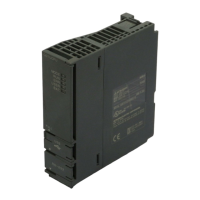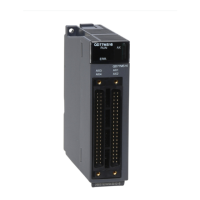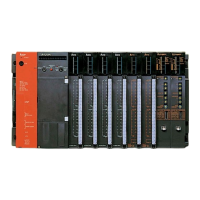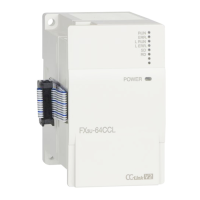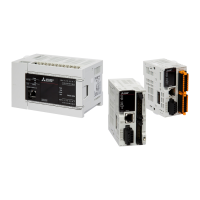4 - 8
CHAPTER4 ASSIGNMENT OF BASE UNIT AND I/O NUMBER
1
2
3
4
5
6
7
8
4.2 I/O Number Assignment
4.2.2 Setting I/O numbers
4.2.2 Setting I/O numbers
Set the I/O number on the I/O assignment tab.
(1) Purpose of I/O number assignment
(a) Reserving points for future module changes
The number of points can be reserved to prevent the I/O number modification when the current
module is changed in the future to the one with the different number of occupied I/O points.
(b) Preventing I/O numbers from changing
The change in the I/O numbers can be prevented when an I/O module or intelligent function
module, whose occupied I/O points are other than 16, is removed due to failure.
(c) Changing the I/O numbers to those used in the program
When the I/O numbers used in the actual system differ from those in the designed program, the I/O
numbers of each module on the base unit can be changed to the ones in the designed program.
● If any of the I/O modules whose number of I/O points are other than 16 fails without I/O assignment setting, the I/O
numbers assigned following to the failed module may change, leading to a malfunction.For this reason, making the I/O
assignment setting is recommended.
● I/O assignment setting allows the following settings as well.
• Input response time (I/O response time) ( Section 6.7)
• Error time output mode ( Section 6.8)
• CPU module operation during a hardware error of intelligent function modules ( Section 6.9)
• Switch setting of intelligent function modules and interrupt modules( Section 6.10)
The I/O assignment is required for the input response time and switch settings.

